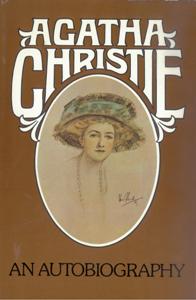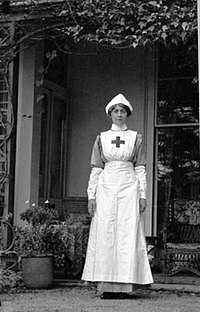
Dame Agatha Mary Clarissa Christie, Lady Mallowan, was a British author known for her 66 detective novels and 14 short story collections, particularly those revolving around fictional detectives Hercule Poirot and Miss Marple. She also wrote the world's longest-running play, the murder mystery The Mousetrap, which has been performed in the West End of London since 1952. A writer during the "Golden Age of Detective Fiction", Christie has been called the "Queen of Crime"—a moniker which is now trademarked by her estate—or the "Queen of Mystery". She also wrote six novels under the pseudonym Mary Westmacott. In 1971, she was made a Dame (DBE) by Queen Elizabeth II for her contributions to literature. Guinness World Records lists Christie as the best-selling fiction writer of all time, her novels having sold more than two billion copies.
Miss Jane Marple is a fictional character in Agatha Christie's crime novels and short stories. Miss Marple lives in the village of St Mary Mead and acts as an amateur consulting detective. Often characterised as an elderly spinster, she is one of Christie's best-known characters and has been portrayed numerous times on screen. Her first appearance was in a short story published in The Royal Magazine in December 1927, "The Tuesday Night Club", which later became the first chapter of The Thirteen Problems (1932). Her first appearance in a full-length novel was in The Murder at the Vicarage in 1930, and her last appearance was in Sleeping Murder in 1976.

The Mysterious Affair at Styles is the first detective novel by British writer Agatha Christie, introducing her fictional detective Hercule Poirot. It was written in the middle of the First World War, in 1916, and first published by John Lane in the United States in October 1920 and in the United Kingdom by The Bodley Head on 21 January 1921.

Sleeping Murder: Miss Marple's Last Case is a work of detective fiction by Agatha Christie and first published in the UK by the Collins Crime Club in October 1976 and in the US by Dodd, Mead and Company later in the same year. The UK edition retailed for £3.50 and the US edition for $7.95.

Peril at End House is a work of detective fiction by British writer Agatha Christie, first published in the US by the Dodd, Mead and Company in February 1932 and in the UK by the Collins Crime Club in March of the same year. The US edition retailed at $2.00 and the UK edition at seven shillings and sixpence (7/6).

Greenway, also known as Greenway House, is an estate on the River Dart near Galmpton in Devon, England. Once the home of the author Agatha Christie, it is now owned by the National Trust.

The Murder at the Vicarage is a work of detective fiction by British writer Agatha Christie, first published in the UK by the Collins Crime Club in October 1930 and in the US by Dodd, Mead and Company later in the same year. The UK edition retailed at seven shillings and sixpence and the US edition at $2.00.

A Murder Is Announced is a work of detective fiction by Agatha Christie, first published in the UK by the Collins Crime Club in June 1950 and in the US by Dodd, Mead and Company in the same month. The UK edition sold for eight shillings and sixpence (8/6) and the US edition at $2.50.

Postern of Fate is a work of detective fiction by Agatha Christie that was first published in the UK by the Collins Crime Club in October 1973 and in the US by Dodd, Mead and Company later in the same year. The UK edition retailed at £2.00 and the US edition at $6.95.
Kate Ashfield is an English actress and screenwriter, who has appeared in stage, TV and film roles, most famously in her role as Liz in the 2004 zombie comedy Shaun of the Dead. She is the co-writer of the 2017 TV series Born to Kill.

The Conservatory Garden is a formal garden near the northeastern corner of Central Park in Upper Manhattan, New York City. Comprising 6 acres (24,000 m2), it is the only formal garden in Central Park. Conservatory Garden takes its name from a conservatory that stood on the site from 1898 to 1935. It is located just west of Fifth Avenue, opposite 104th to 106th Streets.

And Then There Were None is a 1943 play by crime writer Agatha Christie. The play, like the 1939 book on which it is based, was originally titled and performed in the UK as Ten Little Niggers. It was also performed under the name Ten Little Indians.
Appointment with Death is a 1945 play by crime writer Agatha Christie. It is based on her 1938 novel of the same name.

Poems is the second of two collections of poetry by crime writer Agatha Christie, the first being The Road of Dreams in January 1925. It was published in October 1973 at the same time as the novel Postern of Fate, the final work she ever wrote.

An Autobiography is the title of the recollections of crime writer Agatha Christie published posthumously by Collins in the UK and by Dodd, Mead & Company in the US in November 1977, almost two years after the writer's death in January 1976. The UK edition retailed at £7.95 and the US edition at $15.00. It is by some considerable margin the longest of her works, the UK first edition running to 544 pages. It was translated and published in Greek, Italian, Polish, Portuguese, Hungarian and Spanish.

Come, Tell Me How You Live is a short book of autobiography and travel literature by crime writer Agatha Christie. It is one of only two books she wrote and had published under both of her married names of "Christie" and "Mallowan" and was first published in the UK in November 1946 by William Collins and Sons and in the same year in the US by Dodd, Mead and Company. The UK edition retailed for ten shillings and sixpence (10/6) and the US edition at $3.00.

Colonel Archibald Christie was a British businessman and military officer. He was the first husband of mystery writer Dame Agatha Christie; they married in 1914 and divorced in 1928. They separated in 1927 after a major rift due to his infidelity and obtained a divorce the following year. During that period Agatha wrote some of her most renowned detective novels. Shortly after the divorce, Christie married Nancy Neele, and the couple lived quietly for the rest of their lives. Christie became a successful businessman and was invited to be on the board of directors of several major companies.

Agatha and the Truth of Murder is a 2018 British alternative history drama film about crime writer Agatha Christie becoming embroiled in a real-life murder case during her 11-day disappearance in 1926. Written by Tom Dalton, it depicts Christie investigating the murder of Florence Nightingale's goddaughter, Florence Nightingale Shore, which is based on real people and events, and how her involvement in this case influenced her subsequent writing.

Rosalind Margaret Clarissa Hicks was the only child of author Agatha Christie.

Cockington Court, near Torquay in Devon, England, is Grade II* listed on the English Heritage Register. The manor dates back to Saxon times, and is mentioned in Domesday Book. The current house was built in the 16th century, when it was owned by the Cary family. Today it is a craft centre and a venue for special events.


























